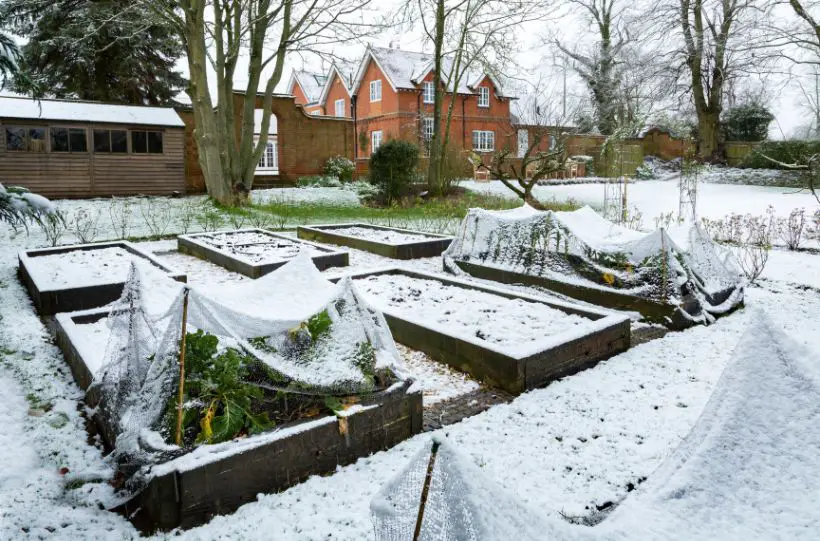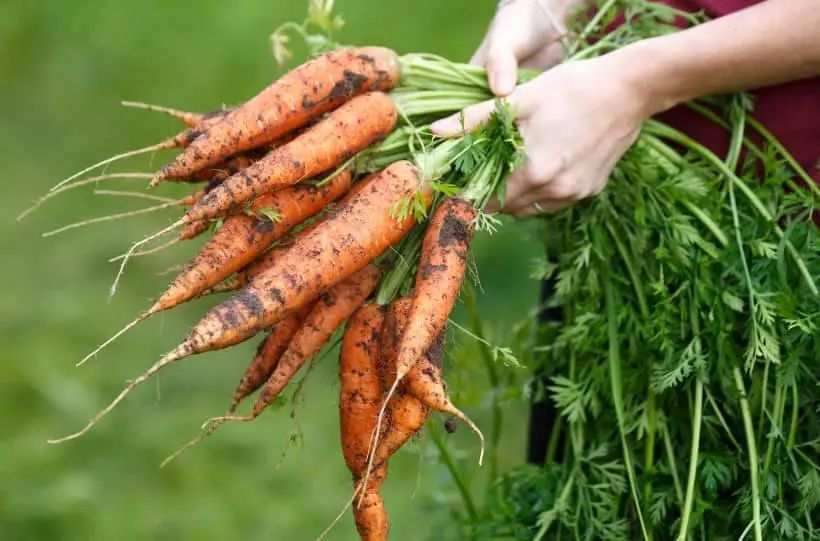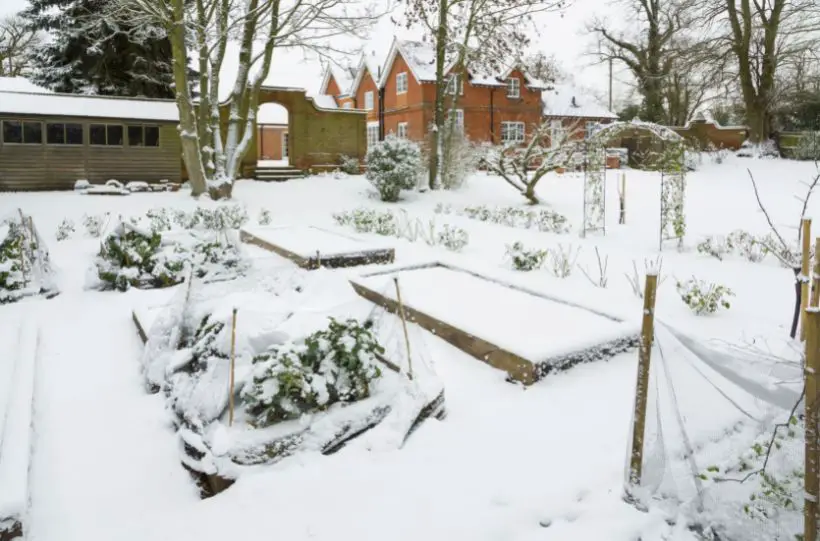What to Plant For a Winter Vegetable Garden
Living in an area that has distinctly different seasons can be a challenge when trying to grow food all year round. Especially when it comes to winter, the cold weather, low temperatures, and harsh wind and rain can challenge even the most experienced gardeners.
But, contrary to what you might believe, many crops can survive the winter months and even be harvested throughout winter.
Knowing which crops and when to plant them can be a game-changer when growing food to harvest during the winter months. Crops such as spinach and turnips can grow in winter with the proper care.
Whereas other plants, such as carrots, can be harvested in the late autumn and stored for many months for use during winter.
In this post, we will share a list of crops you can plant for a winter vegetable garden to increase your growing season and harvest potential.

Things to Consider When Planting For a Winter Vegetable Garden
First things first, we need to consider a few details in advance of planting your crops during the year. The position of your crops is crucial to ensure they are well protected from the harsh winter elements later in the year.
Shelter
Where you plant your crops is important all year round but can especially make a difference to the survival of your crop in Winter.
During the winter months, not only can temperatures dramatically decrease, but you can experience strong winds and heavy rain, depending on where you live.
This needs to be taken into account when considering a position to plant your crops.
Make sure to position them somewhere that will provide them shelter and protection from harsh elements. This way, your crops that are still growing during winter will have the right protection to survive until they are ready to be harvested.
Sunlight
All plants need sunlight for photosynthesis to occur. But during the winter, with the sun in a lower position, parts of your garden that may have been sunny in the summer may no longer receive as much sunlight.
When planning your vegetable garden, ensure to plant your winter-growing crops in an area that will receive sunlight all year round.
Soil Quality
With less sunlight, an increased risk of waterlogged soil, and fewer nutrients available for your winter crops, make sure to plant them in high-quality, organic soil.
Turn your soil and add nutrients to the soil along with organic matter, such as compost, to prepare it for planting. Also, remember that your winter crops may need a bit of extra support with an environmentally-friendly fertilizer.
Planting Position
Make sure not to plant your winter-growing crops at the bottom of a hill. With heavier rain in winter, the water will collect at the bottom of the hill. Combine this with the harder ground, the soil becomes water-logged, and the rain doesn’t drain away as well.
Plant your crops in a position that isn’t at the bottom of a slope, where excess water can drain away easily.
Extra Protection
Finally, consider adding an extra layer of protection for your winter vegetables. If you don’t have a greenhouse or cold frame, at minimum, ensure you have to hand a warm cover such as a plant fleece cover or protective mat.
This will enable you to cover your crops during the worst frosts, which is particularly essential to protect your leafy vegetables’ during a bad frost.
5 Plants For A Winter Vegetable Garden
Here are five vegetables that do very well during winter and can be harvested throughout winter from your winter vegetable garden.
Turnips
This root vegetable makes an excellent addition to your winter vegetable garden. It’s fantastic in winter-warming recipes such as stews and soups, making it a must-have crop for your winter garden.
Ensure to plant your turnip seeds in August and keep maintaining your crop throughout the winter. When your turnips reach the size of a golf ball, they are ready to harvest.
Carrots
Carrots are a very hardy vegetable and can do well grown all year round. For harvesting in late Autumn and early winter, plant your carrot seeds in Spring. Your carrots can be harvested during the winter months also, but remember to check the ground, so it doesn’t become waterlogged and lead to rot.

Alternatively, you can harvest your carrots in late Autumn and store them whilst also planting a new set of seeds. These seeds will grow during the winter months to provide a new supply of carrots in Spring.
Spinach
Unlike many salad plants, spinach grows very well in cooler weather and doesn’t need as much sunlight.
As spinach doesn’t have a long maturing period, it can be planted during late Autumn. It grows quickly and can continue to be harvested well into the winter months.
As spinach leaves can be quite delicate, for maximum growing potential, try to grow inside a cold frame for an added layer of protection from the frost.
Pak Choi
Pak choi is a delicious vegetable originating from Asia and is excellent in a salad or cooked in a stir fry. With delicate leaves, pak choi does need additional protection, such as a cold frame. But with this extra protection from the winter elements, pak choi can be grown and harvested throughout winter.
Parsnips
Parsnips are another common winter vegetable found in supermarkets that can easily be grown at home. As they have a long maturing period, they are best planted in Spring.
They can either be harvested in Autumn and stored, or, for a fuller flavor, consider leaving them in the ground until you are ready to harvest them in the winter.
As with many vegetables, they will need some over-winter protection, particularly during the frosts, which will help also to protect the soil around your vegetables.

These are just a few of the various crops that can be grown in a winter vegetable garden. Ensuring to provide an additional layer of protection from the worst frosts, keeping an eye out for waterlogged soil, and providing shelter for your crops will aid in the success of your crops.
For more top tips on caring for your garden during winter, take a look at these posts:

